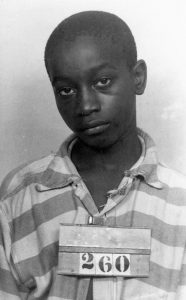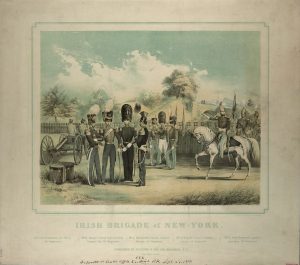Running outside, chasing your friends, playing with Legos–these are things you might remember doing as a young child. However, from the late 1700s to the mid-1800s in Britain, being paid meager wages and working for as much as sixteen-hour days with dangerous mining equipment was the norm for many young, British children. During the Industrial Revolution this was an ugly reality. Many working-class families found it necessary to have their children work alongside them in the mines. Because of their size and cooperation, and because it was easier to pay them less, these children were paid about five times less than men for the same number of hours worked, which for these young miners could be up to fourteen-hour days.1

Before the Mines and Collieries Act of 1842, children as young as four were allowed to work in the mines.2 Just imagine such young children running around a dark coal mine–it simply does not sound safe at all. These children were hired to be able to get into those hard to reach places that fully grown adults were unable to get into. During the Industrial Revolution, coal was a major source of energy, and was extremely important because it burned hotter than wood charcoal. The primary use of coal was used as a source of energy, and used to power the steam engines of factories, where many other children also worked. Because of its high demand and necessity, it helped increase jobs for the working people. Because of these factories, major industrial cities such as Birmingham, Manchester, and Liverpool, grew at a fast pace from small villages into large cities.3

In British coal mines, children typically had one of three jobs. Trappers, typically the youngest, would open and close the wooden doors–also called trap doors–to allow fresh air to flow through the mine. These trappers would sit in darkness for almost twelve hours at a time. It may seem a simple task, but if one of these little ones fell asleep, the job could become very dangerous. Other jobs were the tasks of hurrier and thruster. These jobs were usually given to older children and women. These workers had to pull and push tubs that were full of coal along the roadways, all the way to the pit bottom. The hurriers would be harnessed to the tub, and the thrusters would then help hurriers by pushing these tubs of coal. The thruster would have to push tubs of coal weighing over 600 kilograms from behind with their hands and the tops of their heads. The thrusters, mainly older girls, had to carry these baskets of dug coal, which were much too heavy for them. Because of their heavy weight, it would then cause their young, growing bodies to develop with deformities. The last typical job was the getter. This one was typically assigned to the oldest and strongest, usually grown men or strong, older teens. This job required them to work at the coal face, cutting the coal from the seam with a pickaxe. This was typically the only job where they would use a candle or safety lamp for light, as cutting the coal required it.4 Although the work at the coal mine may not seem very difficult, it was very dangerous. In one unnamed coal mine, 58 of the total 349 deaths in one year involved children thirteen years or younger.5

Those who worked in coal mines–whether below or above ground–were exposed to life-threatening working conditions that could ultimately be detrimental to their health. Children, mainly boys as young as eight, worked as breakers. Here, the coal was crushed, washed, and sorted according to size. The coal would come down a chute and along a moving belt. These breaker boys would work in what was called the picking room. Here, they would work hunched over for ten hours a day, six days a week, sorting the rock and slate from the coal with their bare hands. If their attention even drifted for a second, they could lose a finger in the machinery.6 The work also resulted in their exposure to a large amount of dust. In some cases, the dust was so dense that their vision would be obstructed. This dust would also get into their lungs, which needless to say, was terrible for their health.7 These children sometimes even had a person prodding or kicking them into obedience to make sure their attention did not stray.
These working conditions for children continued until the United Kingdom’s Parliament passed the Mines and Collieries Act of 1842. The act included a report that informed the public about how children as young as five years old were working as trappers for “twelve hours a day and two pennies a day.”8 It was not until the Children’s Employment (Mines) Report came out alongside it in 1842 that Parliament passed the act that all boys and girls under the age of ten were not allowed to work in the coal mines.9 Even after this law prevented children under fourteen from working in the mines, people still found ways around it. For example, since some regions did not have a compulsory registration of birth, someone could easily lie and claim that these boys were simply “small for their age.” Finally, with this legislation came the snowball effect of humanitarians and a larger awareness of health and safety regulations for workers, which led to the start of the end of child labor in England.10
- Children’s Employment Commission First Report of the Commissioners (Mines), (Halifax: Irish University Press, 1842), 77-81. ↵
- Encyclopedia Britannica.com, December 2012, s.v. “Anthony Ashley Cooper, 7th earl of Shaftesbury,” by Editors of Encyclopedia Britannica. ↵
- New World Encyclopedia, February 2017, s.v., “Child Labor,” by New World Encyclopedia Contributors. ↵
- Great Britain Commissioners, The Condition and Treatment of the Children employed in the Mines and Colliers of the United Kingdom Carefully compiled from the appendix to the first report of the Commissioners With copious extracts from the evidence, and illustrative engravings, (London: 1842), 19-59. ↵
- J. M. Mason, “Protection of Children,” The Westminster Review Vol. 36 (1841): 66. ↵
- Jane Humphries, “Short stature among coal-mining children: A comment,” Economic History Review 1, no. 3 (1997): 533. ↵
- Jane Humphries, “Short stature among coal-mining children: A comment,” Economic History Review 1, no. 3 (1997): 535. ↵
- Encyclopedia Britannica.com, December 2012, s.v. “Anthony Ashley Cooper, 7th earl of Shaftesbury,” by Editors of Encyclopedia Britannica. ↵
- “Early Factory Legislation.” Parliament. UK. (April 9th, 2017). ↵
- J. M. Mason, “Protection of Children,” The Westminster Review Vol. 36 (1841); 45-47. ↵



98 comments
Alexis Renteria
This article just breaks my heart. I cant imagine my siblings having to work for so long in these terrible conditions. Furthermore, the fact that parents were okay with their young children working in such dangerous conditions is not right, even if they need the money. Overall, this was a greatly written article touching on a very sad but interesting topic, and it does a very good job of showing what children had to go through back then.
Ezequiel De La Fuente
What a horrible thing that the children of England and of that time had to experience. It’s very sad, but nonetheless history. I’m glad society tells the stories, such as your informative article, to aware other of what happened and so that history is not doomed to repeat itself. This article was very well written and it makes me be grateful that things like this aren’t happening today, at least in America.
Ernie Sano
Mankind has undergone periods of severe hardship. Ideologies and morals change, causing the willingness of society to deal with these hardships to decrease drastically. Compassion renders ideas such as unconstitutional child labor void in their effectiveness to raise the country up as a whole. While I do not agree with the ideas of those that lived in the discussed time period, I do acknowledge that the ethical dilemma that would be present today is nonexistent due to different mindsets in time.
Karina Nanez
This was fantastic reporting on a dark subject involving the industrial revolution that not many people know about. So many children suffered terrible and sometimes fatal health consequences from all the dust and weight they were forced to inhale and push around respectively. Absolutely awful considering that these children worked to sustain their families and help put food on the table.
Jasmine Martinez
This article was very informational, and it showed me more about child labor that I didn’t know. I think it really opened another perspective on how much of a privilege it is to be able to say I grew up at a time when child labor wasn’t being enforced. It’s very sad to think or try to place myself in those kinds of conditions and hours of work, so I can only imagine how much worse it was on those children.
Troy Leonard
its very shocking how the children back then were living. their whole childhood was stripped from them to work in hard labor jobs. the type of conditions that they were living in is even worse, sitting in dark small areas I couldn’t only imagine what the were felling. I’m glad that children today don’t have to go through this type of life and I would never want to hear children complaining about their lives after hearing how kids in Britain were treated
Ryann Cervantes
Not only was this article interesting and very informative, but it also made me feel sympathy for children back then. It must have been horrible having to work from such young ages, and even for the parent’s to have to force their kids into that life. It also made me appreciate more the fact that our society has progressed far enough that, at least in this country, we don’t need to resort to those measures.
Benjamin Voy
Coming from Britain, this article stuck out to me. It was extremely interesting to find out that such young children would be given such dangerous jobs. I can’t even remember when I was 4 as it was so long ago but I know that I was doing nothing of this magnitude. Its incredible to see how times and have changed and clearly all the work that was put in back then allows for our new generation to have such an ‘easy’ life.
Miranda Yzaguirre
It is a sad thing to realize how horrible working conditions used to be for children. I can’t imagine being a parent and having to send my child to work for 12 hours or more a day just to put food on the table. Parents knew the risks but still were just desperate for money. One thing this article left me wondering about was how the economy was affected by the loss of all of those child workers. I also wonder what the death rate was. The first picture underneath the title is devastating to look at, which made it a perfect hook for people to want to read this article. Very informative and well written.
Thomas Fraire
This article is really sad, I couldn’t even imagine working a 12 hour shift at my job as a lifeguard. But little children were forced to work and were underpaid and their work conditions sucked. But at the end of the day they did what they had to in order to help put food on the table and take care of there family and that’s really admirable. I think in society we forget that life could be a lot worse and this is a reminder of that fact.